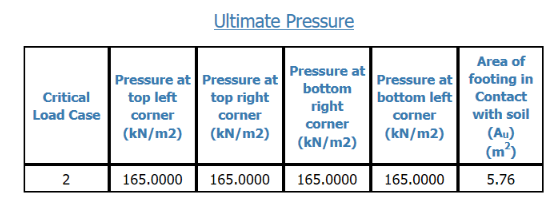What's New in CONNECT Edition Update 3 (v8.3.0)
This document describes new or enhanced features of STAAD Foundation Advanced since the CONNECT Edition Update 2 (Release 8.2).
Sliding and Overturning Checks for Mat Foundations
Additional Conditions for Checking the Safety of Isolated Footings
- Permissible Soil pressure for ultimate load cases
- Minimum required contact area for ultimate load cases
The maximum soil pressure that is reached and the least (smallest) area in contact from among all the ultimate load cases is now reported in the calculation sheet.
Saving the data before the analysis and design is performed
If any change has been made to the data, the program will now remind you to save the file before the analysis and design can be performed.
In the case of models created using older versions, you may be asked to save the file even if you do not make any change in the data. This is because of a change in the database structure between this version of STAAD Foundation Advanced and prior versions that causes the file to be populated with additional terms at the time of opening the model.
Updated Examples
New examples have been added for modules such as isolated footings and ribbed (combined) footings for codes such as Indian and Canadian. These can be accessed by clicking the Examples link on the Start Page.
Rectification of defects
A number of improvements have been made in the program in areas such as handling of input, removal of defects in calculations for some of the foundation modules, display of output, printing, drawing generation, stability related aspects that resulted in crashes or caused the program to freeze, extensive time taken for analysis of certain modules, etc. For details, see the Revisions History page on Bentley Communities.

